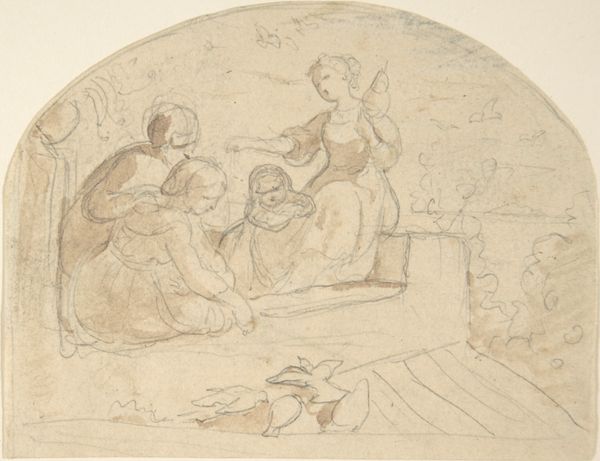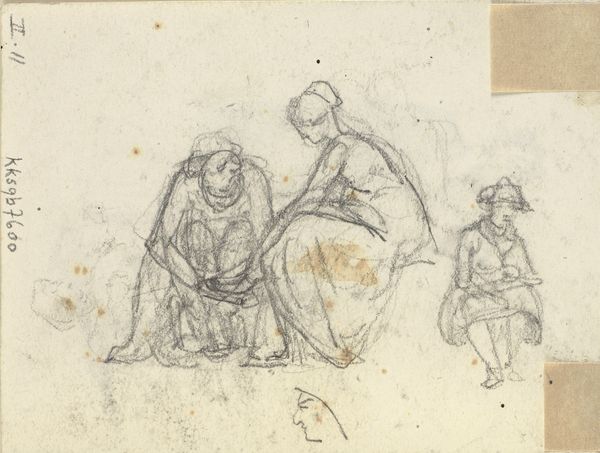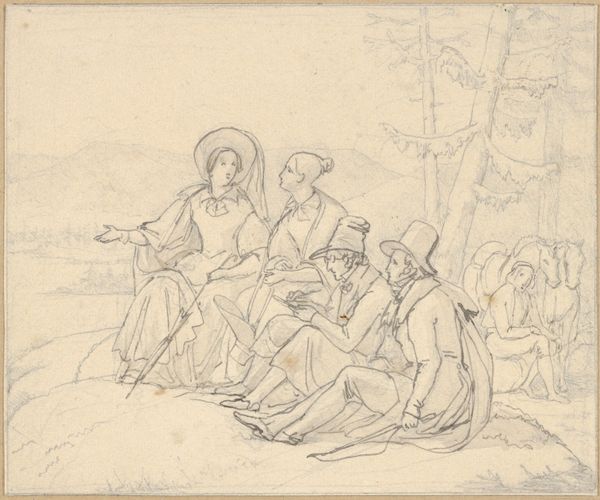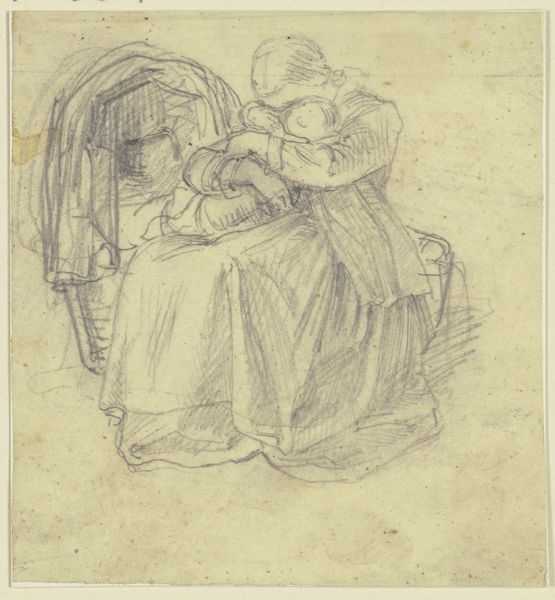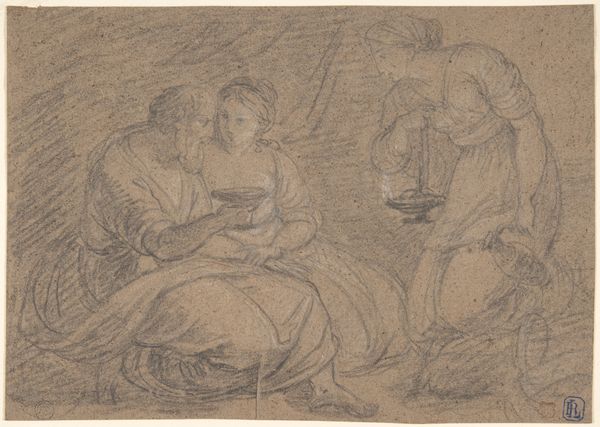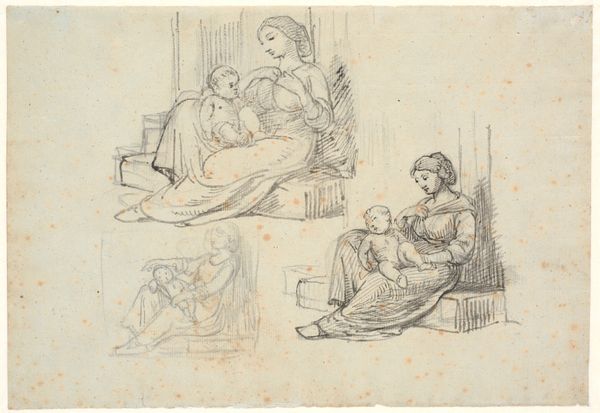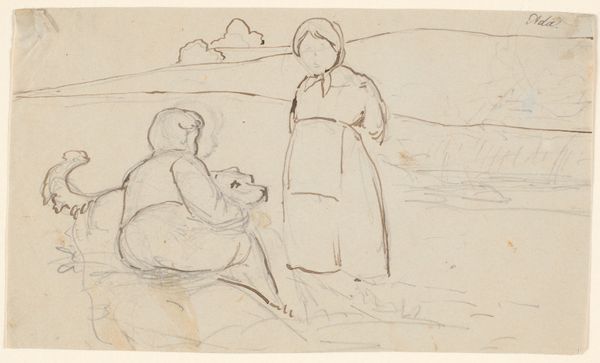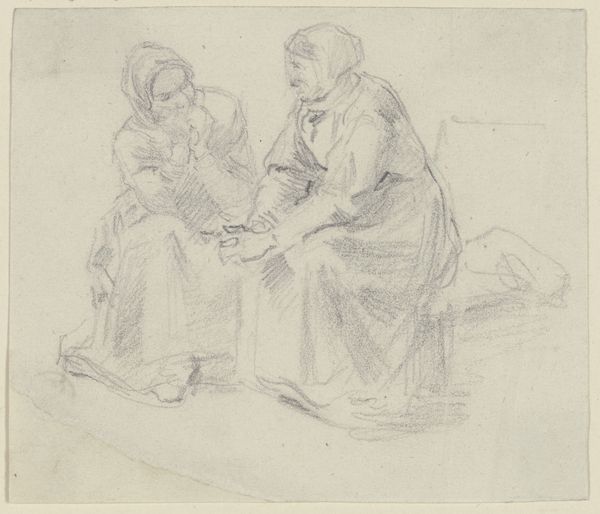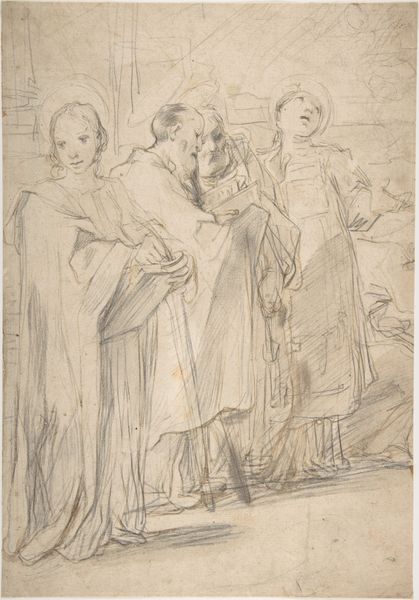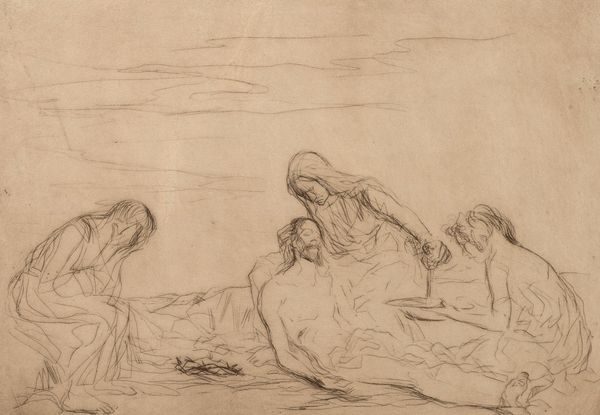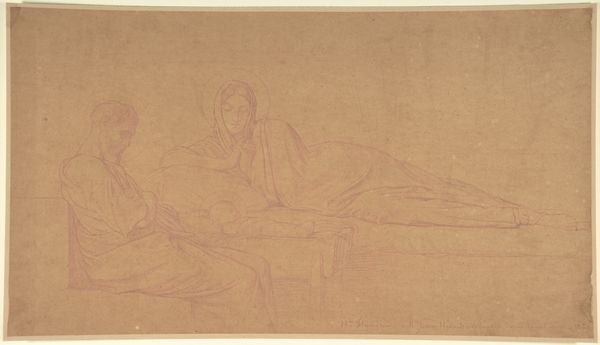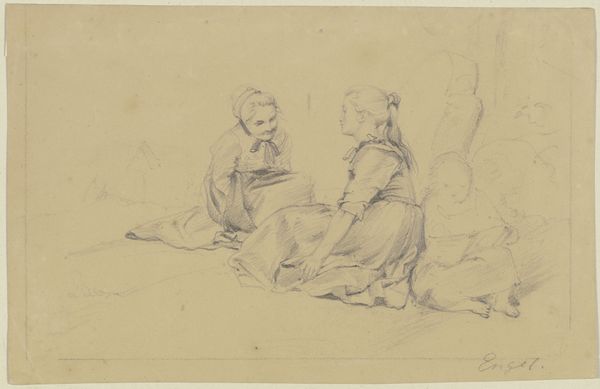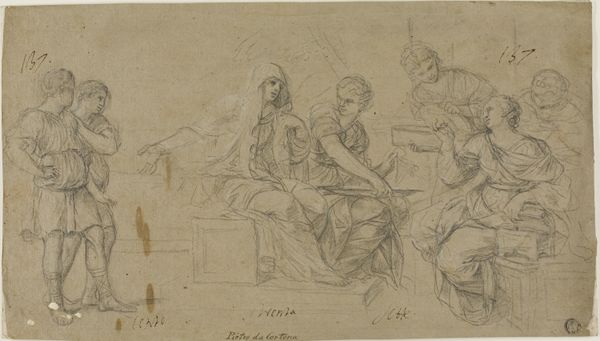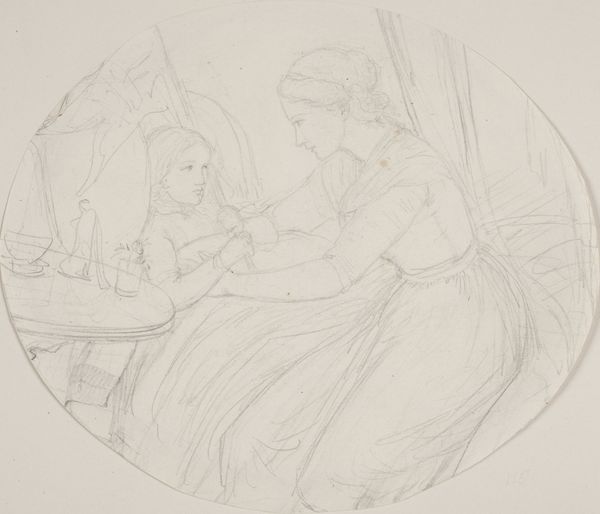
drawing, pencil
#
drawing
#
landscape
#
figuration
#
pencil
#
portrait drawing
Dimensions: 18 x 24 cm
Copyright: Public domain
Curator: This pencil drawing, "Study of a scene on a beach" by Alfred Dehodencq, presents us with three figures in a landscape setting. Editor: My first impression is a quiet drama, almost a stage tableau. The monochromatic palette emphasizes the forms, the drapery, the stark landscape, leading to an almost ethereal quality. Curator: Indeed. Dehodencq, active in the 19th century, was known for his ethnographic scenes depicting life in Spain and North Africa, and we should not forget that artistic practices often have ties to imperialism and colonialism, particularly regarding artistic production during this period. One can’t separate representation from that social context. How does the artist's labor play into that historical narrative? Editor: Certainly, we should acknowledge those social dynamics. From a formal standpoint, observe how the artist uses line weight and hatching to create volume and depth. The positioning of each figure creates a visual rhythm across the scene; however, their identities remain mysterious. How might the viewer complete this puzzle? Curator: Considering that this work has been labeled "Study," what can be learned about production that wouldn't necessarily be apparent in a finished work? The labor that goes into artistic creation itself is central to this image, I'd say, revealing something important about how art history functions as a history of craft. Editor: It appears that Dehodencq placed each figure carefully. The seated figure creates a visual anchor, the kneeling figure reaches upwards expressing grief, while the third, standing further back, observes the exchange between the two other figures, contributing to a palpable sense of tension across the composition. Curator: The raw physicality of the materials — pencil on paper — further invites us to ponder artistic choices regarding presentation. How accessible are quality materials? Were such scenes purely artistic studies, or were they sometimes conceived with an audience of patrons and customers? These practical decisions play a key role. Editor: Perhaps, but beyond the specific production context, it draws one's gaze back into the drama unfolding amongst those lines, compelling us to create a compelling narrative. Curator: And recognizing the role that social history has in shaping what kinds of narratives and whose narratives we consume. Editor: A lovely example of line work to contemplate indeed. Curator: Certainly provides an example of the role production can play in narrative-making.
Comments
No comments
Be the first to comment and join the conversation on the ultimate creative platform.
